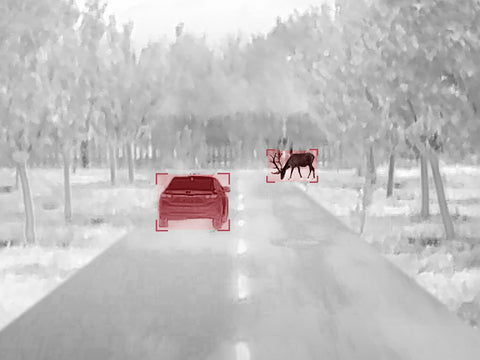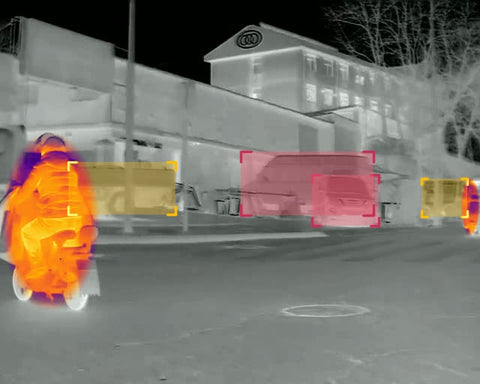Automotive Thermal Cameras: A Key Safety Companion for Autonomous Driving and Night Driving
With the continuous progress of science and technology, automotive technology has undergone tremendous changes. But safety is always at the core of the automotive industry. One of the innovations that has attracted a lot of attention and discussion in the industry is the automotive thermal camera. The core of this technology is its ability to capture and analyze the thermal signals given off by objects. Hotter objects emit more infrared radiation, and cooler objects emit less. This unique feature makes thermal cameras an integral part of night driving and the development of autonomous driving systems. This article will explore how automotive thermal cameras work and how they can significantly improve road safety.

The Transformative Role of Automotive Thermal Cameras
One of the main advantages of automotive thermal imaging is that it can greatly improve visibility in night driving environments. It is well known that driving at night often presents several challenges, such as difficulty seeing pedestrians, wildlife, and obstacles on the road. While traditional headlights provide sufficient brightness, they often cannot penetrate dark or dimly lit areas, limiting the driver's visibility. In contrast, by detecting the thermal signal issued by the object, the thermal imager can help the driver more accurately judge the road conditions ahead, enabling timely evasive actions to avoid potential accident risks.
In addition, thermal cameras do not need to worry about glare or reflections from wet surfaces or fog. Regardless of the weather conditions, the thermal camera provides a stable and clear view of the road, ensuring drivers have a comprehensive driving perspective without blind spots. This feature provides strong technical support for night driving safety.

Enhancing Night Driving Safety with Thermal Imaging Technology
Automotive thermal cameras are an important part of the Advanced Driver Assistance System (ADAS) and autonomous driving technology. They become particularly crucial when visible light cameras or other sensors may fail due to adverse weather conditions. It can detect the temperature distribution of objects without a visible light source.
As technology continues to advance, thermal cameras have been integrated into modern autonomous vehicles, and no longer rely solely on GPS positioning and radar sensors for navigation. This is a huge technological breakthrough for autonomous vehicles. Now, drivers can trust these vehicles to navigate accurately even in nighttime or dimly lit environments, and make informed decisions. Due to their reliability and accuracy in complex weather conditions, automotive thermal imagers ensure the safety of passengers and pedestrians. Whether on busy city streets or long-distance travel on highways, thermal imaging can effectively improve the safety of driving, and reduce the occurrence of traffic accidents, but also improve the overall performance of autonomous vehicles and passenger comfort.

All in all, automotive thermal cameras, as an essential part of modern automotive technology, are gradually changing our understanding of night driving and autonomous driving. By detecting the thermal signals given off by objects, these cameras can improve visibility, reduce glare, and uncover hidden dangers. From basic safety to more complex intelligent auxiliary functions, this device will undoubtedly become an important driver of the future automotive industry. With more research and development on this technology, we have reason to believe that shortly, automotive thermal cameras will become a necessary safety companion in every car.




